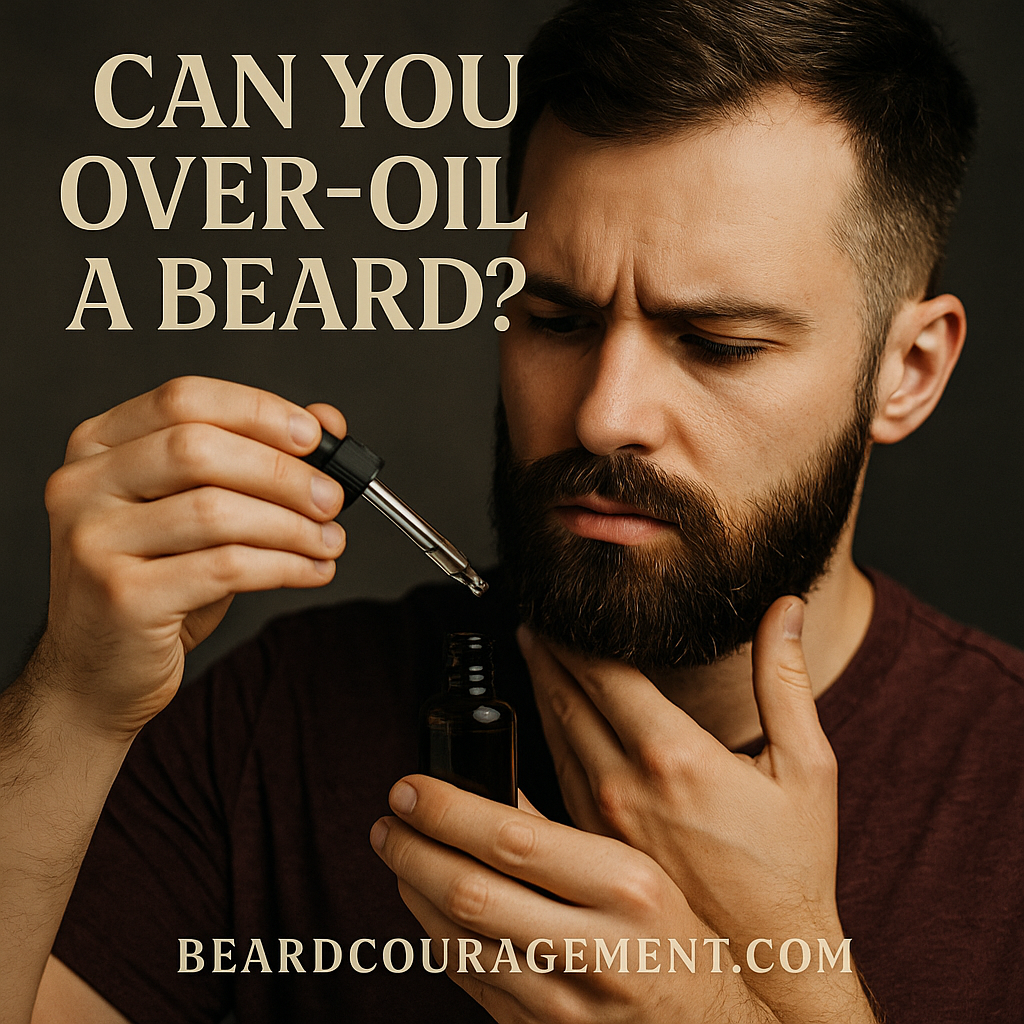
Beard oil is often considered the holy grail of grooming. It softens facial hair, prevents itchiness, and keeps your beard looking healthy and well-nourished. But just like anything good, there’s such a thing as too much of it. Over-oiling your beard can actually cause the opposite of what you want—leaving it greasy, heavy, and even prone to skin irritation.
Let’s look at what happens when you overdo it, how to tell if you’re using too much, and how to find the perfect balance for your beard type.
What Happens When You Use Too Much Beard Oil
Using more beard oil doesn’t necessarily mean a healthier beard. In fact, overuse can lead to several common issues:
- Greasy Appearance: Your beard should have a healthy sheen, not a slick shine. Too much oil makes it look wet and weighed down, especially in daylight.
- Clogged Pores: When oil builds up on your skin, it can mix with dirt or dead skin cells, leading to clogged pores and beard acne.
- Itchy or Irritated Skin: Ironically, using too much oil can cause the skin beneath your beard to feel itchy or inflamed, especially if your pores become blocked.
- Product Build-Up: Over time, residue from excessive oiling can make your beard feel sticky or stiff instead of soft and natural.
How Much Beard Oil Should You Actually Use?
The right amount of beard oil depends on the length and thickness of your beard. Here’s a simple rule of thumb:
- Short beard (stubble to 1 inch): 2–3 drops
- Medium beard (1–3 inches): 3–6 drops
- Long beard (3+ inches): 6–10 drops or more, depending on density
It’s better to start small and add more only if your beard feels dry. Distribute the oil evenly by rubbing it between your palms and massaging it into your beard and skin underneath.
How Often Should You Apply Beard Oil?
For most men, once a day is enough—usually after a shower when your pores are open and the beard is slightly damp. If you live in a dry climate or have coarse hair, you might benefit from applying a second time before bed.
However, applying beard oil multiple times throughout the day can easily lead to over-saturation, especially if you’re not washing your beard regularly.
Signs You’re Over-Oiling Your Beard
If you’re not sure whether you’re using too much, look for these signs:
- Your beard feels slick hours after application
- You notice buildup or flakes under your beard
- Your skin feels oily or itchy
- You’re washing your pillowcase more often than usual
These are all indicators that it’s time to dial back your routine.
How to Fix an Over-Oiled Beard
If you’ve accidentally gone overboard, don’t worry—it’s easy to fix:
- Wash your beard with a mild beard shampoo to remove excess oil and buildup.
- Rinse thoroughly with warm water to open pores and clear residue.
- Towel dry gently—avoid rubbing too hard, which can cause frizz.
- Reapply a small amount of beard oil the next day, using only what’s necessary.
Regular washing and conditioning will help reset your beard’s natural balance.
Finding the Right Balance
Beard oil should enhance your natural look, not overpower it. A healthy beard feels soft, smells great, and moves freely. The key is consistency, not quantity. Think of beard oil as a conditioner, not a styling product—you’re nourishing, not coating.
Final Thoughts
Yes, you can over-oil a beard—but it’s an easy mistake to correct. The goal isn’t to make your beard shine like polished wood, but to keep it hydrated, smooth, and touchable. Start with a few drops, adjust to your environment and hair texture, and let your beard’s natural oils do their part. When in doubt, less is more.
